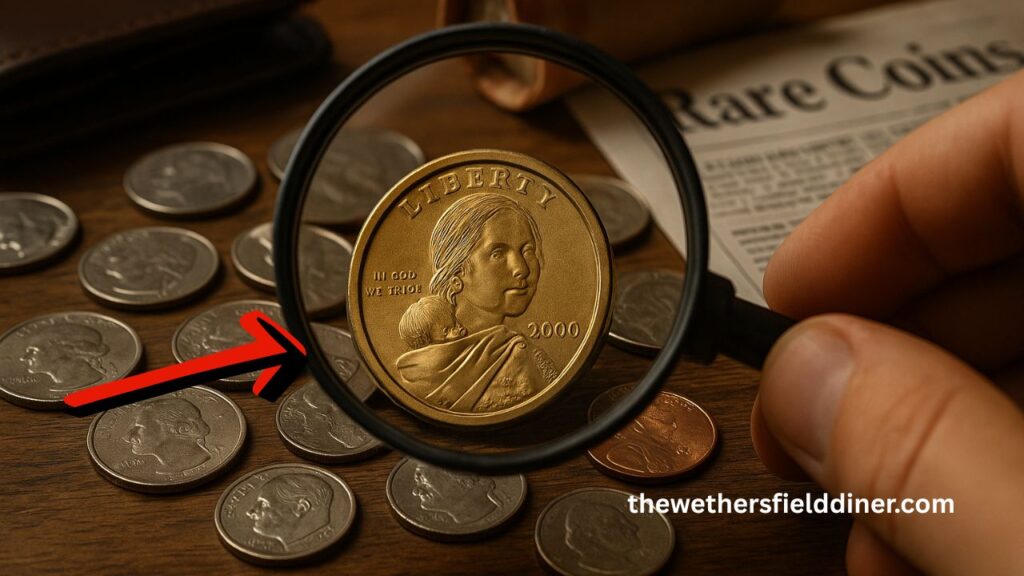In July 2025, a Denver convenience store worker made headlines after discovering a rare 2000-P Sacagawea Dollar in a cash register—an error coin now valued at a jaw-dropping $2.1 million.
This exceptional find, known as a “mule error,” has reignited excitement among collectors and casual coin holders alike. Could one be sitting in your change jar?
What Is the $2.1 Million Sacagawea Mule Error?
The mule error occurs when two mismatched coin dies are used to strike a coin. In this case, a Washington quarter obverse (front) was mistakenly paired with the Sacagawea dollar reverse (back) during minting.
The result? A dollar coin with George Washington’s portrait on the front and the eagle from the Sacagawea dollar on the back—a stunning and rare production mistake.
These coins were struck in 2000 at the Philadelphia Mint and are extremely limited—only 19 to 20 known examples exist today.
Key Features of the Rare Mule Coin
Below is a quick comparison to help you identify if your Sacagawea coin might be the $2.1 million treasure:
| Feature | Details |
|---|---|
| Year | 2000-P (Philadelphia mint mark) |
| Error Type | Mule: Washington quarter obverse + Sacagawea dollar reverse |
| Weight | 5.67 grams (lighter than regular Sacagawea dollar) |
| Diameter | 24.26 mm (same as quarter, not dollar) |
| Material | Manganese-brass on quarter planchet |
| Rarity | Only ~19–20 known in existence |
| Estimated Value | Up to $2.1 million (graded MS67) |
How Was It Discovered?
James Carter, a 34-year-old clerk from Denver, noticed a strange golden dollar coin in his till while closing the store. At first glance, he thought it was a standard Sacagawea dollar.
However, seeing George Washington’s profile made him take a second look. Upon confirmation by experts and grading by PCGS at MS67, the coin sold for $2.1 million at auction, tying a record sale price for a modern U.S. coin.
How to Check If You Have One
You don’t need to be an expert to spot this rare coin. Here’s what to look for:
- Obverse (front): George Washington’s face (from a quarter)
- Reverse (back): Flying eagle and “ONE DOLLAR” text from the Sacagawea dollar
- Mint Mark: Look for a small “P” next to Washington’s neck
- Weight/Size: Weighs 5.67 grams and is slightly smaller than a normal dollar coin
- Material: Golden tone, same manganese-brass alloy as normal dollars
Tip: Use a magnifying glass for detailed inspection and avoid cleaning the coin—it may ruin its value.
The Buzz in the Collecting World
Following James’s discovery, coin collectors, numismatists, and everyday savers have begun to examine their change more closely. Coin forums and social media are ablaze with people reporting strange dollar coins, hoping for their million-dollar moment.
Interestingly, 16 of these mule coins are owned by a single collector, making the hunt even more competitive. The remaining few could still be out there—in bank rolls, vending machines, or tucked in your childhood piggy bank.
The Sacagawea Dollar’s Historical Significance
Launched in 2000, the Sacagawea dollar honors the Shoshone woman who guided the Lewis and Clark expedition.
It replaced the less popular Susan B. Anthony dollar and is recognized by its golden tone and smooth edge. But while hundreds of millions were minted, only the mule error versions hold seven-figure value.
A simple dollar coin could change your life—just ask James Carter. With only a handful of the 2000-P Sacagawea mule errors ever discovered, this $2.1 million coin stands as one of the most valuable modern mint errors in U.S. history.
So, next time you’re handed change, don’t overlook the ordinary—you might just be holding a million-dollar mistake.
FAQs
What makes this Sacagawea dollar worth $2.1 million?
The coin is a rare mule error with mismatched obverse and reverse dies, making it incredibly rare and historically significant.
Where should I look for this rare coin?
Check your loose change, vending machine returns, coin jars, and even bank rolls. The mule error is still believed to be in circulation.
Should I clean the coin before getting it appraised?
No. Cleaning a rare coin can damage its surface and drastically lower its value. Leave it as-is for professional grading.
